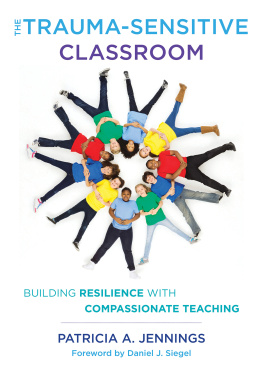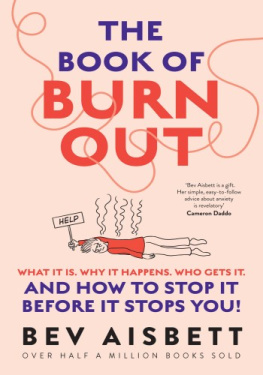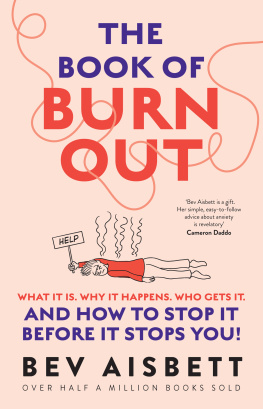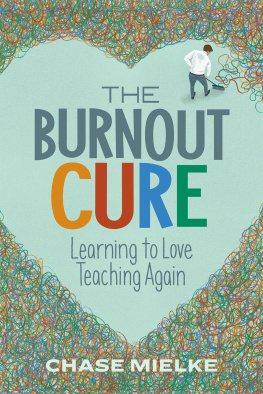Patricia A. Jennings - Teacher Burnout Turnaround
Here you can read online Patricia A. Jennings - Teacher Burnout Turnaround full text of the book (entire story) in english for free. Download pdf and epub, get meaning, cover and reviews about this ebook. year: 2020, publisher: W. W. Norton & Company, genre: Religion. Description of the work, (preface) as well as reviews are available. Best literature library LitArk.com created for fans of good reading and offers a wide selection of genres:
Romance novel
Science fiction
Adventure
Detective
Science
History
Home and family
Prose
Art
Politics
Computer
Non-fiction
Religion
Business
Children
Humor
Choose a favorite category and find really read worthwhile books. Enjoy immersion in the world of imagination, feel the emotions of the characters or learn something new for yourself, make an fascinating discovery.

- Book:Teacher Burnout Turnaround
- Author:
- Publisher:W. W. Norton & Company
- Genre:
- Year:2020
- Rating:4 / 5
- Favourites:Add to favourites
- Your mark:
- 80
- 1
- 2
- 3
- 4
- 5
Teacher Burnout Turnaround: summary, description and annotation
We offer to read an annotation, description, summary or preface (depends on what the author of the book "Teacher Burnout Turnaround" wrote himself). If you haven't found the necessary information about the book — write in the comments, we will try to find it.
Teacher Burnout Turnaround — read online for free the complete book (whole text) full work
Below is the text of the book, divided by pages. System saving the place of the last page read, allows you to conveniently read the book "Teacher Burnout Turnaround" online for free, without having to search again every time where you left off. Put a bookmark, and you can go to the page where you finished reading at any time.
Font size:
Interval:
Bookmark:
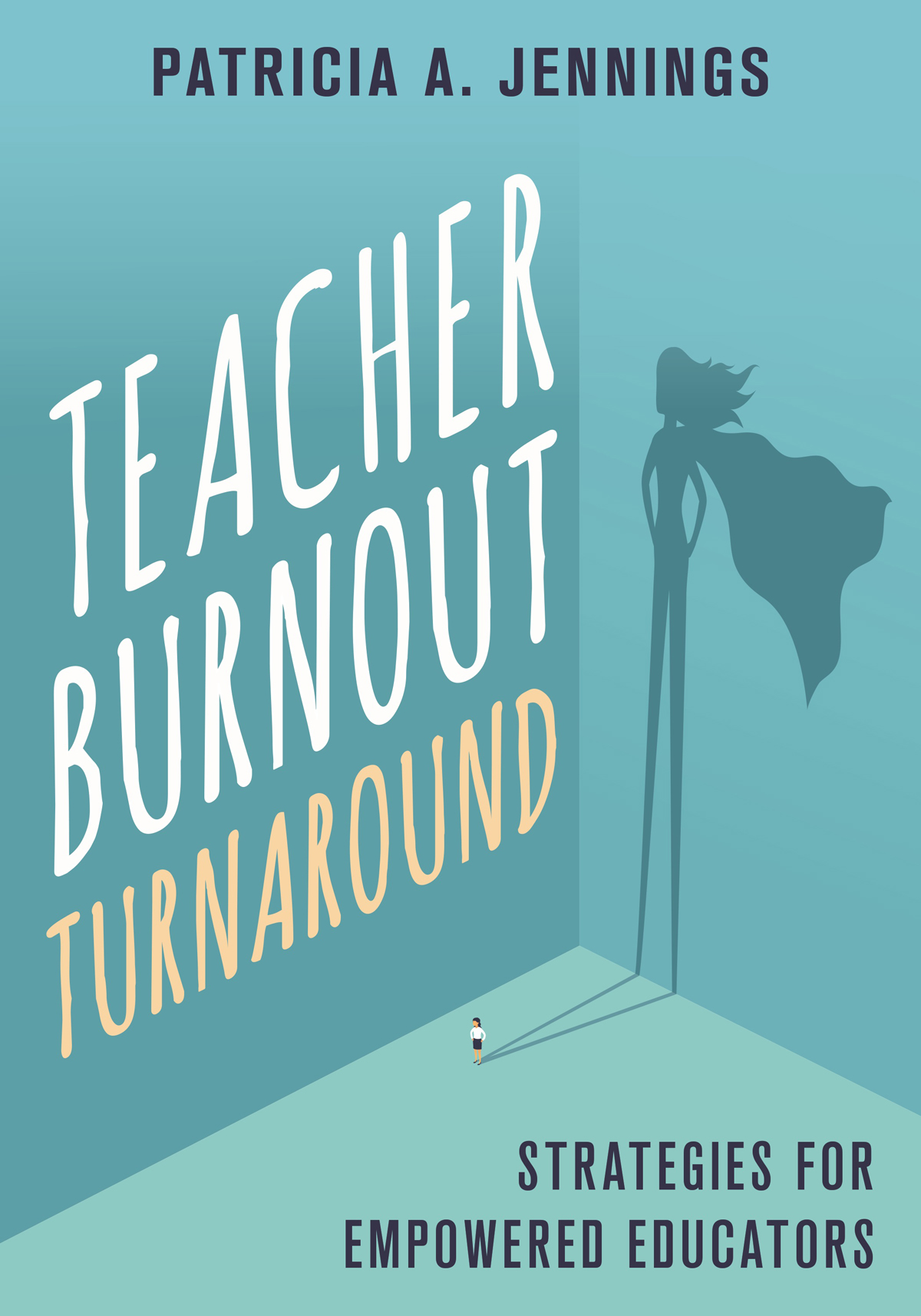
This e-book contains some places that ask the reader to fill in questions or comments. Please keep pen and paper handy as you read this e-book so that you can complete the exercises within.
TEACHER
BURNOUT
TURNAROUND
STRATEGIES FOR
EMPOWERED EDUCATORS
Patricia A. Jennings
Foreword by Chad Ratliff

NORTON BOOKS IN EDUCATION
This book is dedicated to the teachers of the world who devote their lives
to the optimal development of our children and youths. It is time for
society to recognize our important work, and to shift societal priorities to
transforming our schools and our communities to tackle the current and
future challenges before us with courage, mindfulness, compassion, and
creativity. My hope is that this book ushers in the decade of the teacher.
On Liberating Teachers
by Chad Ratliff
Leaders who do not act dialogically, but insist on imposing their decisions, do not organize the peoplethey manipulate them. They do not liberate, nor are they liberated: they oppress.
Paolo Freire, Pedagogy of the Oppressed
Today teachers are faced with unprecedented demands resulting in extremely high levels of burnout and attrition. A matrix of pressures bears down on the profession, many stemming from the antiquated system we have inherited from the industrial revolution. We are now well into the twenty-first century; however, our school systems have been left far behind. Fortunately, there is hope that these systems can be transformed from within by applying systems and design thinking to this problem.
Educators are finding themselves uniquely positioned to be the agents of this change. However, in order to do this, educators need a toolbox of skills that will help us build inner resilience, change the way we think about school, and empower our students. Teacher Burnout Turnaround provides such a toolbox and comes at a particularly critical juncture in education. As we try to change our teaching and learning to adapt to the challenges of living in a pandemic, these skills are more essential than ever. Those of us who are committed to this transformational process will find this an essential guide.
Educational dialogue takes place on three levels: philosophy, policy, and practice. Policy is the political manifestation of a philosophy that defines the purpose of schooling. Practice is rooted in and driven by ones own philosophy within the context of policy. Too often, teachers give little thought to the cultivation of a philosophical foundation, so their practice defaults to prior educational experiences. This means the vast majority of public school teachers are traditionalists without even knowing it.
Liberating teachersadult learnersbegins by exposing them to how schooling can be different, and how that difference can change our calculus of winners and losers. But this isnt done by projecting slides on a screen; it requires that one person who, in the face of dissonance, will change and then bring others along. One person at a time, the fundamental philosophical shift essential to deep change becomes practice. A leader cant mandate agency. Leaders first have to know educators as individuals, then give them the autonomy to reflect on challenges to their beliefs. That begins with understanding how the tightly-held beliefs about schooling were formed, as well as how they became part of DNA of education.
Essentially, two types of schooling exist: that which seeks to assimilate and oppress and that which seeks to enlighten and empower. This book speaks to those of us committed to the latter. Incremental shifts in practice are not the focus of our work. We are committed to significant transformation of the teaching and learning culture in our schools. We have learned that for educators to change pedagogies, they must commit to learning how to learn in todays world. This means reflection, inquiry, and study in collaboration with colleagues and mentors. Provocation of thought and processing drives professional growth beyond superficial change to deep change, that which results in substantively different learning experiences for young people. We see this occur when professional learning opportunities shift from normative learning (top-down and program-driven) to experiential learning that gets educators out of the box. When our educators own their learning, seeing themselves as designers, creators, and makers, they shift their approach to working with learners.
Tish Jennings trusts teachers. She believes many problems in schools can be solved through an authentic emancipation of the energy, commitment, imagination, and potential of teachers and principals. This accessible guide for school change keeps students and teachers at the center of the work to ensure deep, meaningful, sustainable, and long overdue shifts in traditional schooling. As the education sector and indeed, society as a whole, undergoes a period of great historical change, the timing is perfect for Teacher Burnout Turnaround: Strategies for Empowered Educators.
TEACHER
BURNOUT
TURNAROUND
For the past twenty years, I have been carefully following the teacher burnout crisis and watching as each year the attrition rate increases. We have now reached a crossroads; the exodus of teachers from the profession is real and growing, and the problem is threatening to unravel our education systems across the country and around the world. As a teacher, teacher educator, and researcher studying teacher stress, the causes of teacher burnout became clear: untenable working conditions and completely misguided reform efforts. To address this crisis, educators must be actively engaged in school transformation. As teachers, we understand what our students need more than anyone. Furthermore, the growing teacher shortage gives us new leverage in a rapidly failing system. I wrote this book to guide teachers through the process of effecting change by learning how to apply systems and design thinking, as well as how to use their leverage to make sustainable change from the ground up. Finally, I hope to inspire teachers to empower their students to engage in meaningful, self-directed learning that will prepare them for the coming decades of uncertainty.
I began my teaching career as a Montessori teacher, first working with preschoolers, and then students grades 15. Creating completely student-centered learning environments, I had the inspiring opportunity to witness the power of childrens innate drive to learn. When students are guided towards directing their own learning, the teachers job is much easier. I created and maintained the rich environment full of autodidactic materials, showed students how to use them, and created norms and procedures to facilitate ongoing assessment and cooperation. Most important of all, together we created a strong community bond by engaging in cooperative learning projects and sharing the thrill of discovery. While working under these conditions was truly rewarding, I saw a greater need among the many children and youths who did not have the opportunity to access such innovative educational environments. I felt driven to discover a way to contribute and help transform the public school system.
As I began working in the public schools as a teacher and as a teacher educator, the contrasts were striking. In a small, independent school, you can create your own schedule. You are not harnessed to an oppressive time structure managed by harsh bells (which always made me jump, because I was so immersed in my teaching that they took me by surprise). This inflexible schedule is in some ways the hallmark of the public school system because it controls so much of what we can do during the school day. It is also a remnant of the factory system that early policy-makers applied to the challenge of scaling a school system for a growing population.
Font size:
Interval:
Bookmark:
Similar books «Teacher Burnout Turnaround»
Look at similar books to Teacher Burnout Turnaround. We have selected literature similar in name and meaning in the hope of providing readers with more options to find new, interesting, not yet read works.
Discussion, reviews of the book Teacher Burnout Turnaround and just readers' own opinions. Leave your comments, write what you think about the work, its meaning or the main characters. Specify what exactly you liked and what you didn't like, and why you think so.

